Of a Feather: Photos Reveal Stunning Birds of the Southwest
Cactus Wren

The lush deserts of the Southwest and northern Mexico are equally alive with a vast variety of birds that live their entire lives in the warm desert climate. A Cactus Wren, Campylorhynchus brunneicapillus, searches the base of a mesquite tree for food. Cactus Wrens are the largest wrens found in North America. They can survive without freestanding water, getting their moisture from the insects, small lizards, seeds and fruits upon which they dine. The Cactus Wren is an aggressive bird especially around their nests that are usually built in cholla or other types of cacti.
Meep!
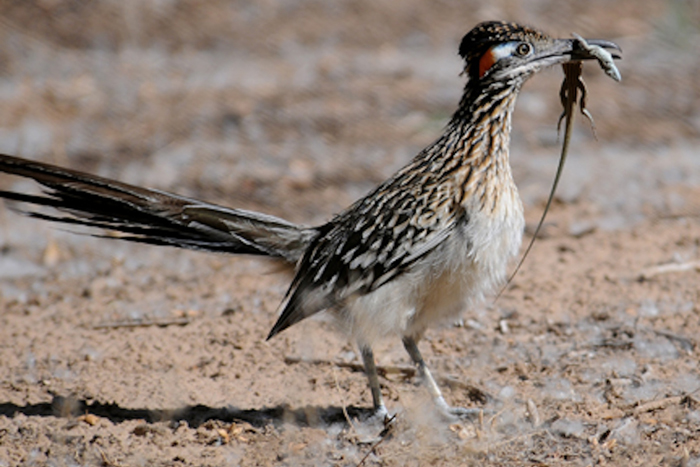
One of the more interesting feathered creatures of this region is the Greater Roadrunner, Geococcyx californianus. These birds were made to run, even though they will take to the air if and when a predator gets too close. They are horrific hunters that will take on a poisonous rattlesnake or a timid lizard with equal zeal! They are members of the cuckoo family and their behaviors are often strange and humorous. Their home range now extends from western Missouri to California and deep into central Mexico.
Tubby little bird
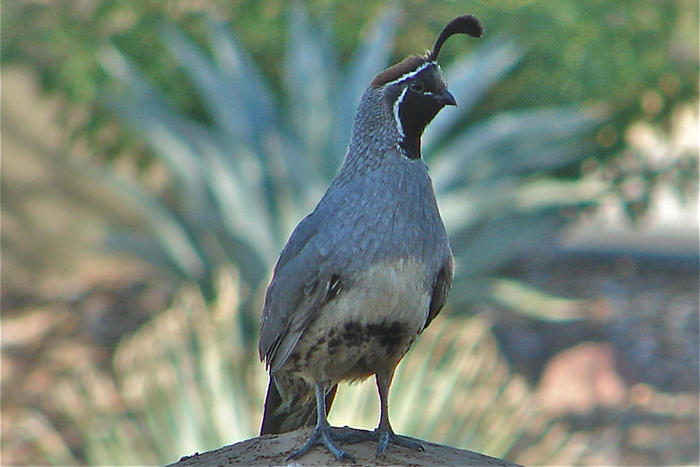
The loveable Gambel's Quail, Callipepla gambelii, is as docile as the roadrunner is hostile in the Southwest's desert environment. This is one of the most common of desert birds and has adapted extremely well to live near humans. They are tubby little birds that would rather walk then fly. They live in groups known as coveys that can include as many as a dozen birds scurrying in groups through front yards and neighborhoods.
A rowdy neighbor
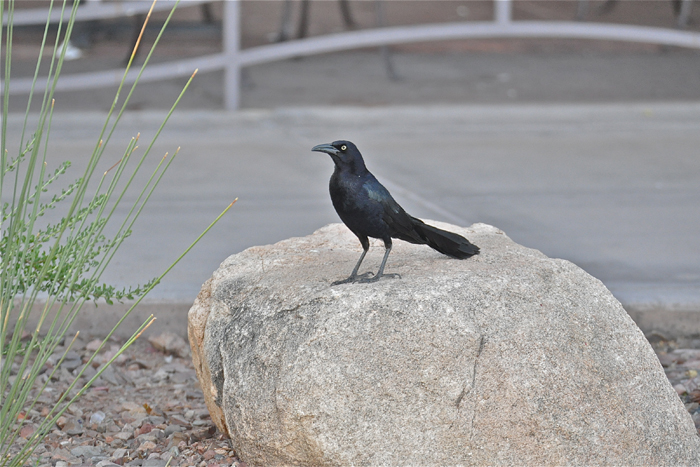
The male Great-tailed Grackle, Quiscalus mexicanus, is a large, black bird that has become common in the developed areas of the Southwest. This brash bird ranges from western Missouri to California and throughout Mexico and Central America. These birds often gather in large, raucous flocks in community trees and can make an amazing amount of noise with their ear-splitting voices. They are handsome birds with their iridescent black feathers and bright yellow eyes.
A friend of birds
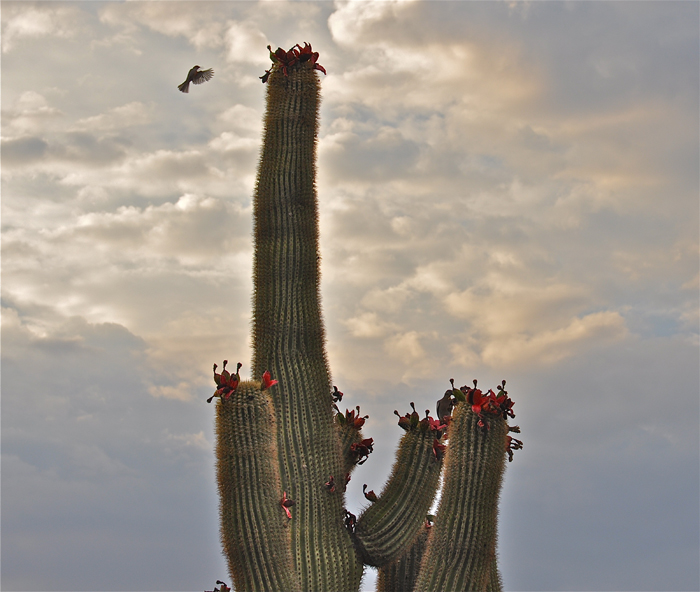
The saguaro cactus, Carnegiea gigantea, is a vital partner with the birds who make their homes in the Sonoran Desert region of Mexico and the United States. This majestic cactus is the indicator plant of the Sonoran Desert and provides both shelter and food for many of the feathered, desert dwellers.
Naptime
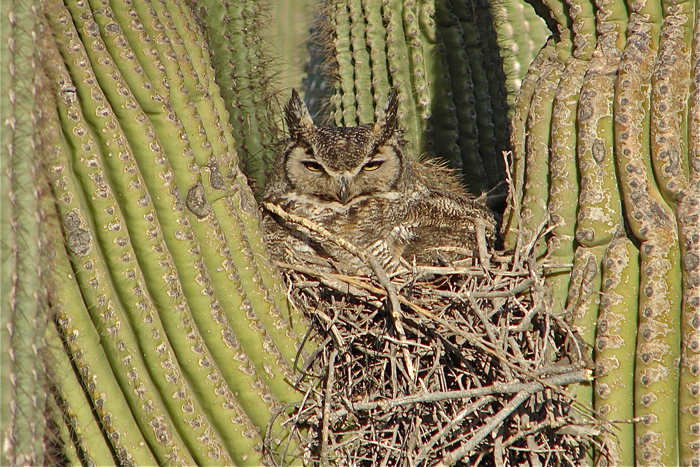
A Great Horned Owl, Bubo virginianus, has built its nest in the arms of the giant saguaro cactus. The Great Horned Owl is a dominant nighttime predator of the Sonoran Desert. This is one of the most common of owls found throughout all of North America. Their deep, stuttering call of a series of four to five “hoots” is one of the most recognized sounds of the natural world.
Home sweet home
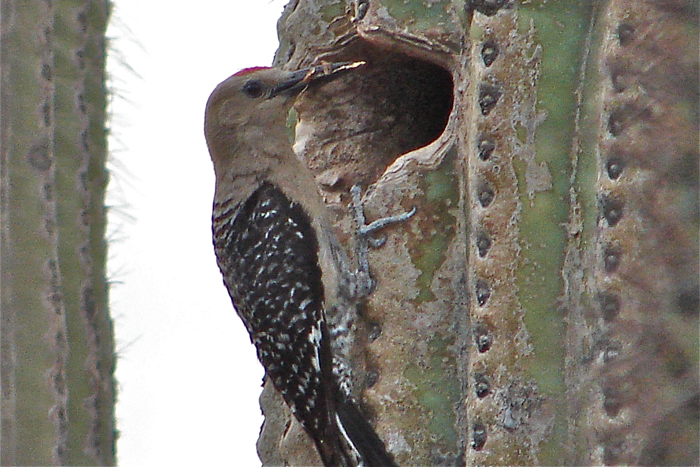
A Gila Woodpecker, Melanerpes uropygialis, carves a nesting hole in which it will raise its young into the saguaro cactus. Such a nesting holes, known as a saguaro boot, provides both a safe and cool environment for the young Gila Woodpeckers to grow. The saguaro boot is actually a hard, callous tissue, secreted by the plant to heal over the wound caused by the woodpecker’s excavation activity. The Gila Woodpecker is one of two species of woodpeckers common in the Sonoran Desert that builds nesting holes in saguaro cacti. The other species is the Gilded Flicker, Colaptes chrysoides.
Get the world’s most fascinating discoveries delivered straight to your inbox.
A brief window
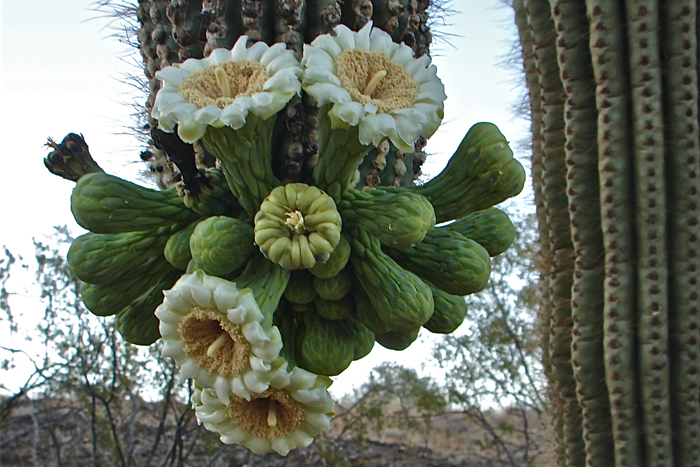
The saguaro cactus flower a spectacular creamy-white bloom that appear in late April – early June. This is historically the driest of time in the Sonoran Desert and food can be in short supply for all the animals that make the desert their homes. Each bloom only remains open for one, 24-hour period of time and must be fertilized by both insects and birds in search of nectar in that time span.
Mealtime
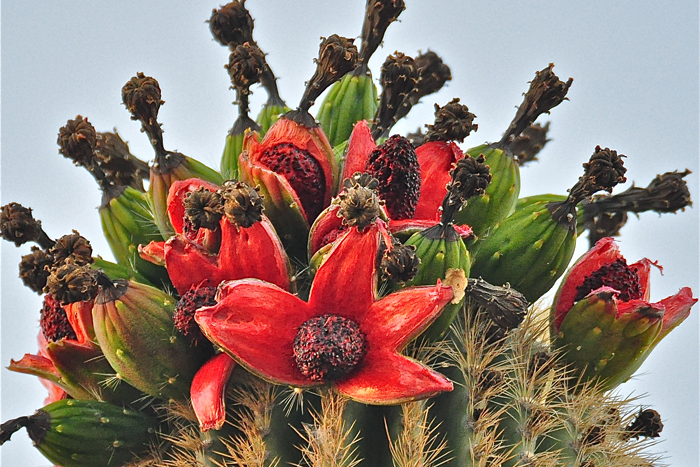
Successful fertilization of the saguaro flowers result in a tremendous feast of seeds becoming available throughout the month of June. Each fruit will produce about 2,000 seeds. Scientists estimate that a mature saguaro cactus will produce about 1 million seeds in its lifetime of which only one of those seeds will ever grow to become a mature, reproducing saguaro cactus.
No lack here
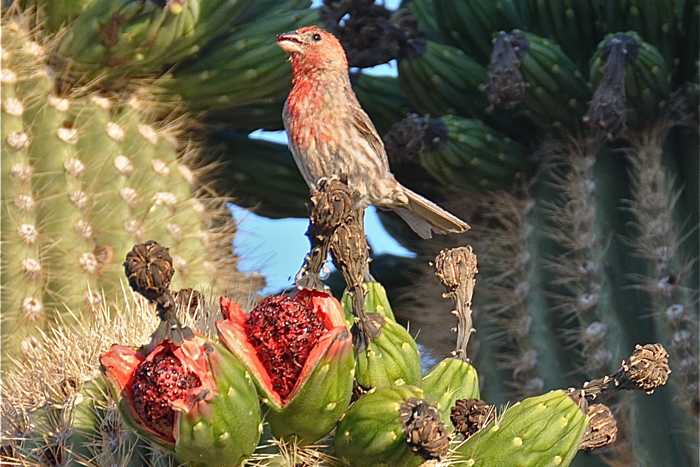
For the birds of the Sonoran Desert the ripening of the saguaro fruit is now a time of plenty. The fruit provides both nourishment and much needed moisture. Rain will return to the Sonoran Desert with the monsoon winds of July, but for now, the saguaro fruit become a lifesaver. Here a Common House Finch, Haemorhous mexicanus, feasts on the seeds of the saguaro.


